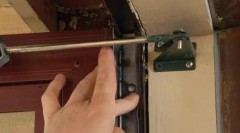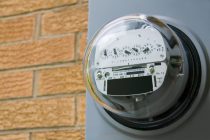As we focus on conserving energy in our homes, we can use a combination of energy efficient windows, thicker insulation, and weatherstripping. Read on to learn for Ace’s Home Experts on how to make your home more energy efficient.
5 Steps To A Healthier Home
Step One: Test for Radon
A do it yourself Radon Gas Test Kit makes this easy for you. You collect an air sample over a few days time, send it in for an accurate lab analysis and get your results. With radon being the second leading cause of lung cancer, it’s well worth your time.
Step Two: Keep Your Heater and Air Conditioner Tune
I’m often asked, “Is cleaning my air ducts worth it?” The answer is yes. Even if your home is new, you may have more internal construction debris and dust than a home that is 10 to 15 years old. Make sure the contractor is a member of the National Air Duct Cleaners Association (www.nadca.com), and uses not only high velocity air, but a whip that is fed through the ductwork to loosen any debris stuck to the walls of the sheet-metal.
If you’re using the basic spun glass filters, consider this: this filter will protect the blower motor, but it will do next to nothing for improving your indoor air quality. Upgrade to a pleated filter that captures microscopic particles. Change them regularly – every couple of months is typical – to prevent to the restriction of airflow through your heating system.
Step Three: Keep Your Home Clean
Keeping your home clean can dramatically improve the air you breathe. Dusting window treatments, around window and door trim and those out-of-reach areas can make a huge impact. Use a vacuum cleaner with a HEPA filter to avoid sending dust back out into the air as you clean.
Step Four: Run an Indoor Air Purifier
They can vary in performance, size and cost, so choose the right purifier for your needs. When comparing models take a look at the following:
- The Clean Air Delivery Rate (CADR). The higher the better.
- Make sure that unit is sized for the square footage of the room you’ll use it in.
- The faster the fan runs, the more air is exchanged through the unit. While this does increase the noise, the unit will work much better.
- HEPA filtration (High Efficiency Particulate Air) has been widely used and accepted by organizations promoting indoor air quality standards to clean the indoor air of smoke, dust, pollen, mold spores and pet dander.
- Ionization charges particles and electrostatically attracts them to metal electrodes. Be aware that some ionic air purifiers can emit ozone as a byproduct of ionization.
Step Five: Install a Carbon Monoxide Detector
When installing a carbon monoxide (CO) detector, remember that the placement of that detector is key. You want them located near sleeping areas, so it will wake you if you’re asleep. But, additional detectors on every level and in every bedroom of a home provide extra protection.
For more helpful tips, go to Tips.acehardware.com.
Published: 3/8/2020



